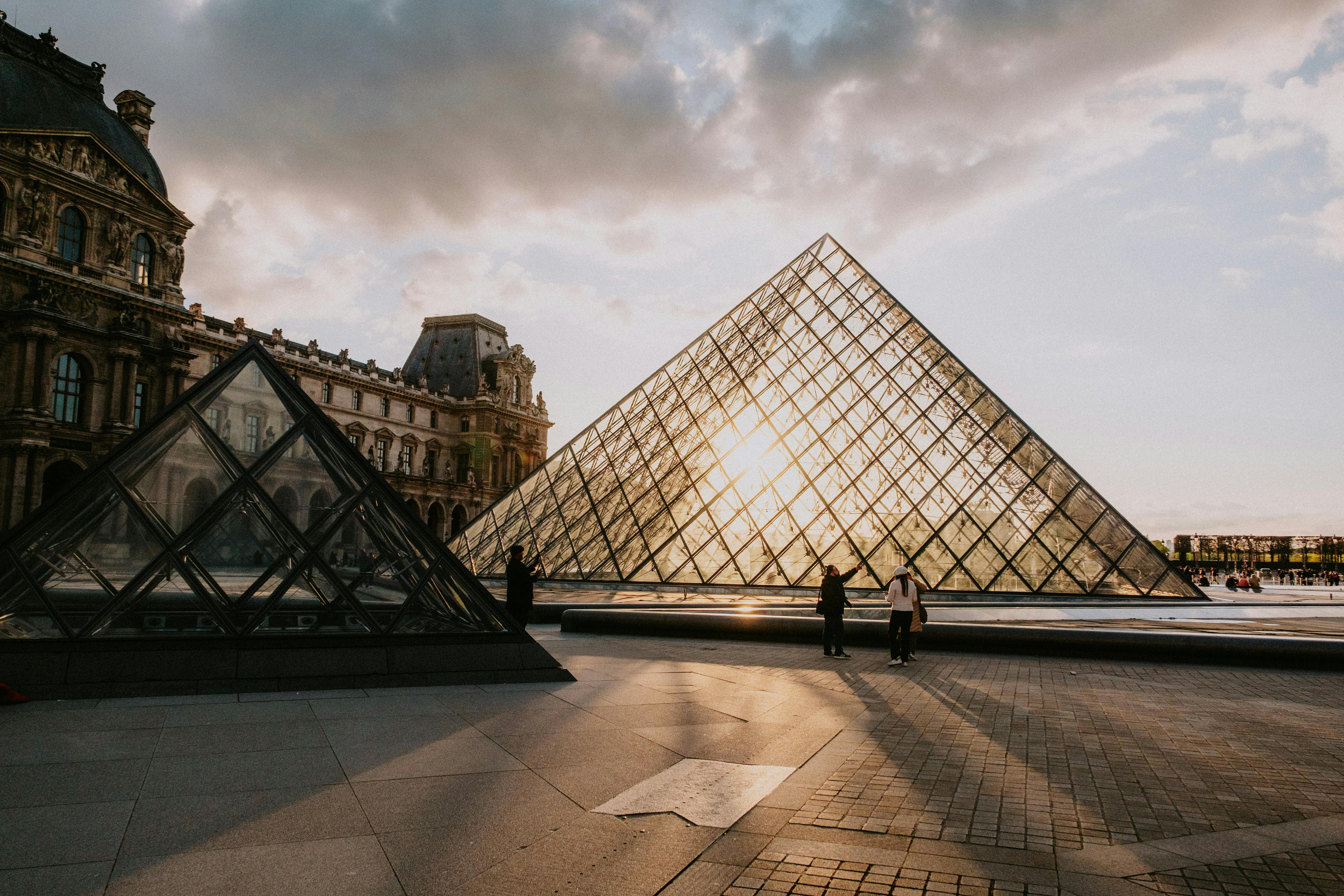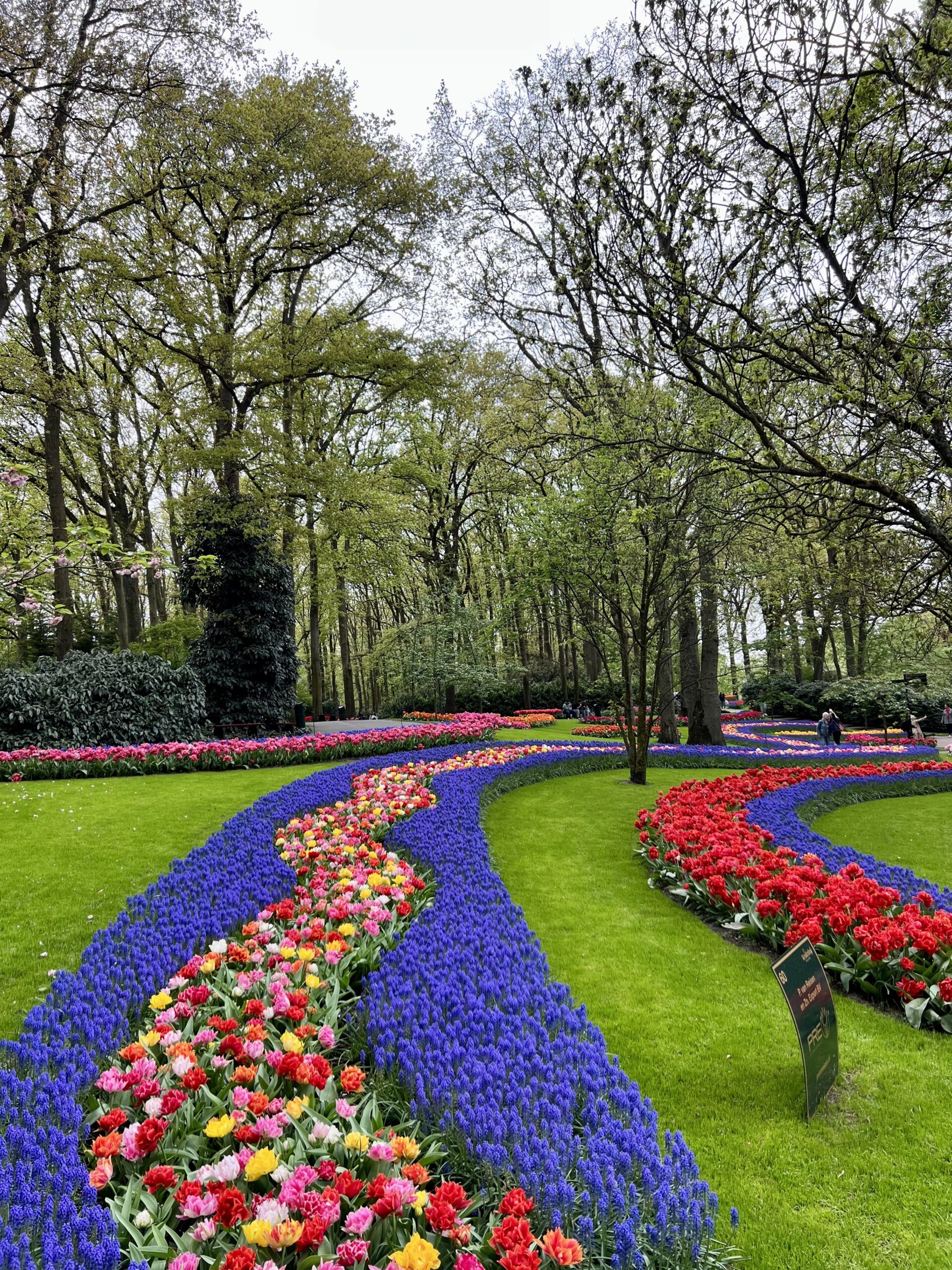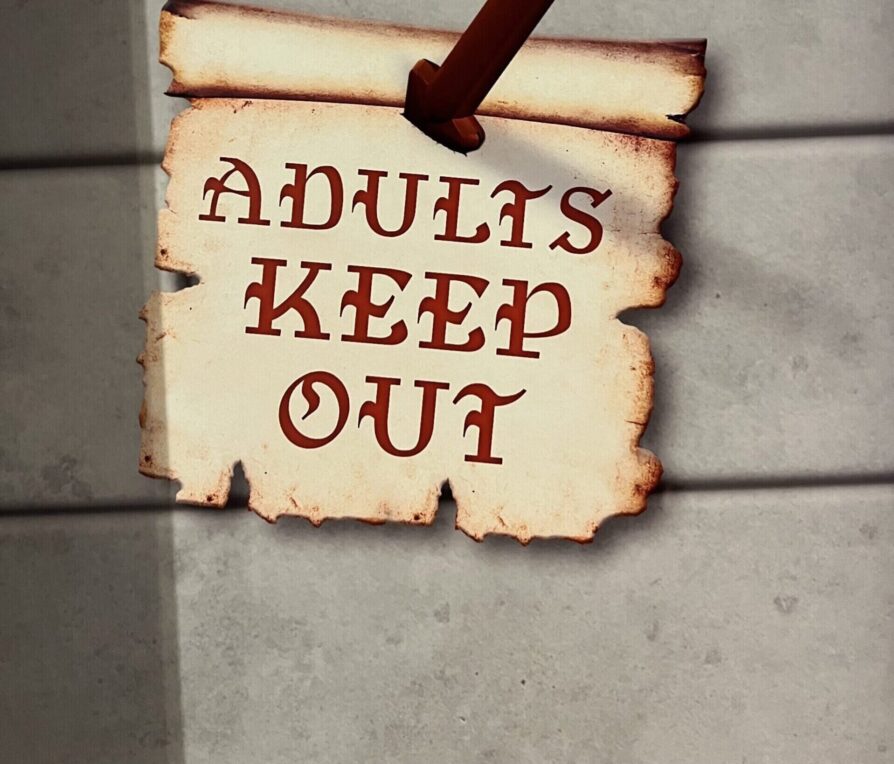Disclosure: This article may contain affiliate links, which means I may earn a small commission at no extra cost to you. Thank you for helping me keep this blog going! 💛
Bremen appeared as a treat on our family road trip through Western Europe. We stopped here between Copenhagen and Cologne (you can find my blog on Copenhagen here). Stopping only for a night in this fabled city, our family of four found more than tales of the Brothers Grimm.
Bremen welcomed us with history, glimpses of stories and eclectic architecture. Our quest wasn’t only about the sights; it was about delving deep into the city’s essence. This blog is about our day of adventure, from wandering the alleys of Schnoor to admiring Böttcherstraße.
Bremen aligned with our family’s values, demonstrating the beauty and depth of travel. Join us in our footsteps, witnessing how a single day in Bremen became a chapter in our family’s storybook.
Bremen’s History and Its Path to Freedom: Charlemagne’s Legacy
Bremen carries a remarkable connection to freedom that echoes through time. Over a thousand years ago, its story began as a bustling trade hub along the Weser River. Charlemagne, the Frankish emperor, recognised its strategic significance and played a pivotal role in its growth.
During the Middle Ages, the influence of the church was pervasive and extended beyond spiritual matters to encompass political and economic domains. Bremen, a thriving trade hub with its own governance structures, encountered attempts by the church to assert authority over its affairs.
The city’s leadership, along with its merchants and citizens, forged a united front against ecclesiastical domination. They recognised that their independence was integral not only to their prosperity but also to their cultural identity. The resistance took various forms, including political negotiations, legal battles, and even armed conflicts.
The turning point in this struggle came with the establishment of the Hanseatic League. Bremen’s participation in this confederation of trading cities provided a collective platform that fortified the city’s resistance. The League’s ethos of self-governance and mutual protection aligned with Bremen’s aspirations, offering a formidable shield against ecclesiastical control.
This legacy of standing against external pressures to protect its identity has left an indelible mark on the city’s culture, architecture, and the very essence of its being.
The Roots of Enchantment: Grimm’s Fairy Tale Connection
In the centre of Bremen, there’s a link to the enduring stories penned by the Brothers Grimm. Wilhelm and Jacob Grimm, known for their anthology of tales, produced stories that remain influential. Exploring Bremen’s streets, one can sense the undertones of these classic tales.
Bremen, influenced by the Grimms’ literary contributions, holds a particular place in their storytelling. This city, marked by its historic architecture, aligns with their legends. Within its stone-paved streets and historical buildings, one can almost trace the paths of Grimm’s fictional characters.
Of all their stories, “The Town Musicians of Bremen” bears the closest ties to Bremen. It tells of four animals – a donkey, dog, cat, and rooster – each facing an uncertain future. Together, they set out for Bremen, hoping to become town musicians. Their journey symbolises friendship, bravery, and discovering comfort in unforeseen places. Notably, variations of this story exist, each with its unique ending, some being quite ironic!
You can find a statue representing the story in front of the city hall. And be sure to expect queueing to take a selfie with it. Walking Bremen’s lanes, one might feel the remnants of these tales, with the city and the Grimm Brothers’ legacy interlinked, highlighted by references to their stories scattered throughout the city.
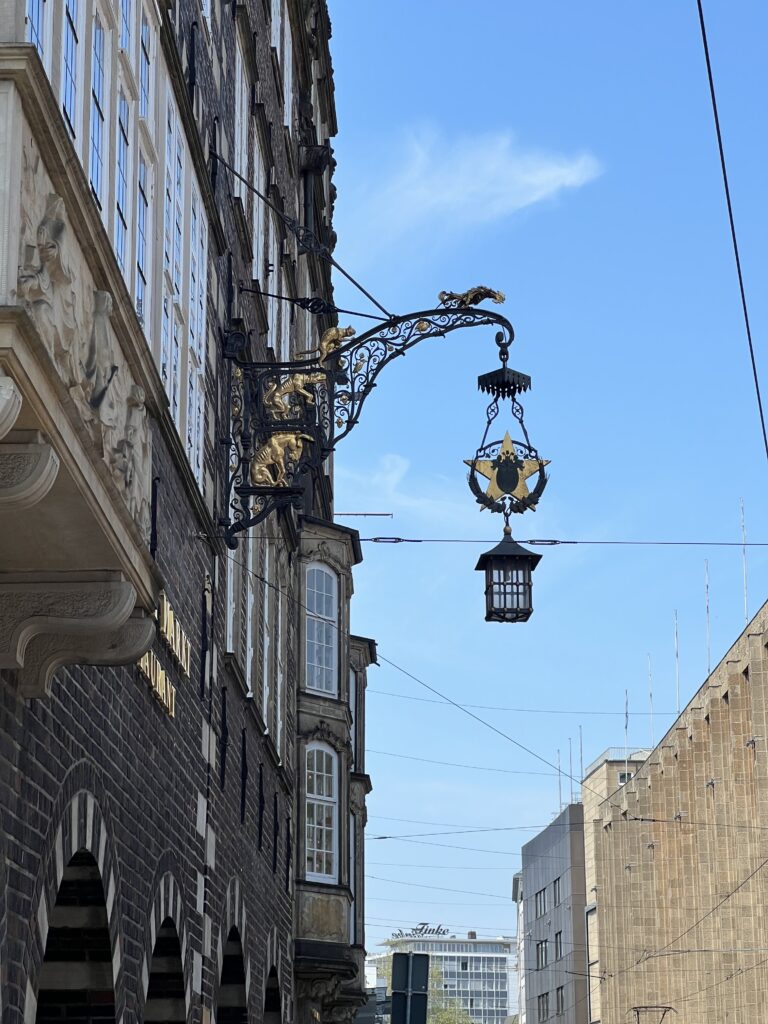
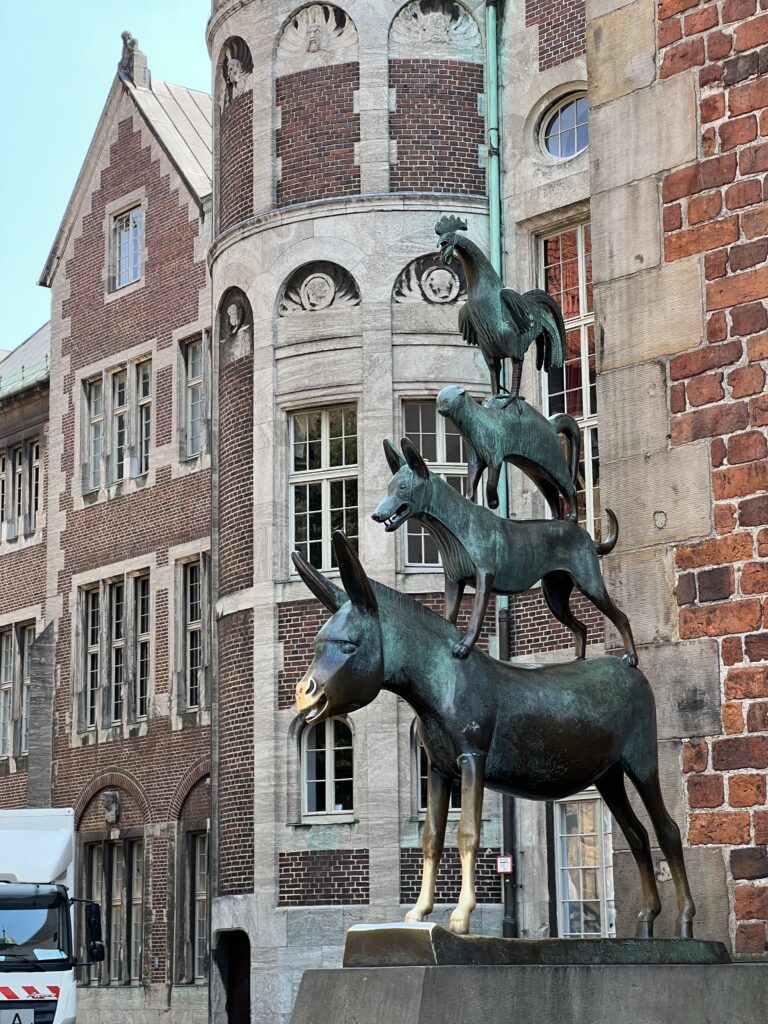
Stepping into History: The Schnoor District
The Schnoor district beckons as a hidden historical gem, transporting visitors through time. This charming quarter boasts a personality of its own, rooted in its medieval origins. Over 100 houses are listed, with the oldest dating from the 14th century. As we strolled its narrow lanes, we could feel a tangible sense of history, like walking in the footsteps of those who came before us.
The architecture in Schnoor paints a portrait of days gone by. Timber-framed houses, their facades a patchwork of rich hues, lean towards one another. The cobblestone streets invite us to explore the little alleys that seem to hold stories at every turn. The streets are so thin that the Katzengang is probably one of the narrowest ones in the world. It is, of course, impossible for cars to pass through, so it makes a very relaxing pedestrian neighbourhood. The charm of this district lies not just in its picturesque aesthetics but in the arts and crafts atmosphere.
Within this historical tapestry, you can find artisan shops and galleries. The present mingles with the past as local craftsmen showcase their talents. As we immersed ourselves in these artistic currents, it became clear that Schnoor is a living canvas, where history and creativity connect seamlessly. Interestingly, this place, which used to be a poor quarter, is now one of the prettiest in the town.
The Schnoor district is in the historical city centre. So you can easily walk there from the marketplace in less than ten minutes.
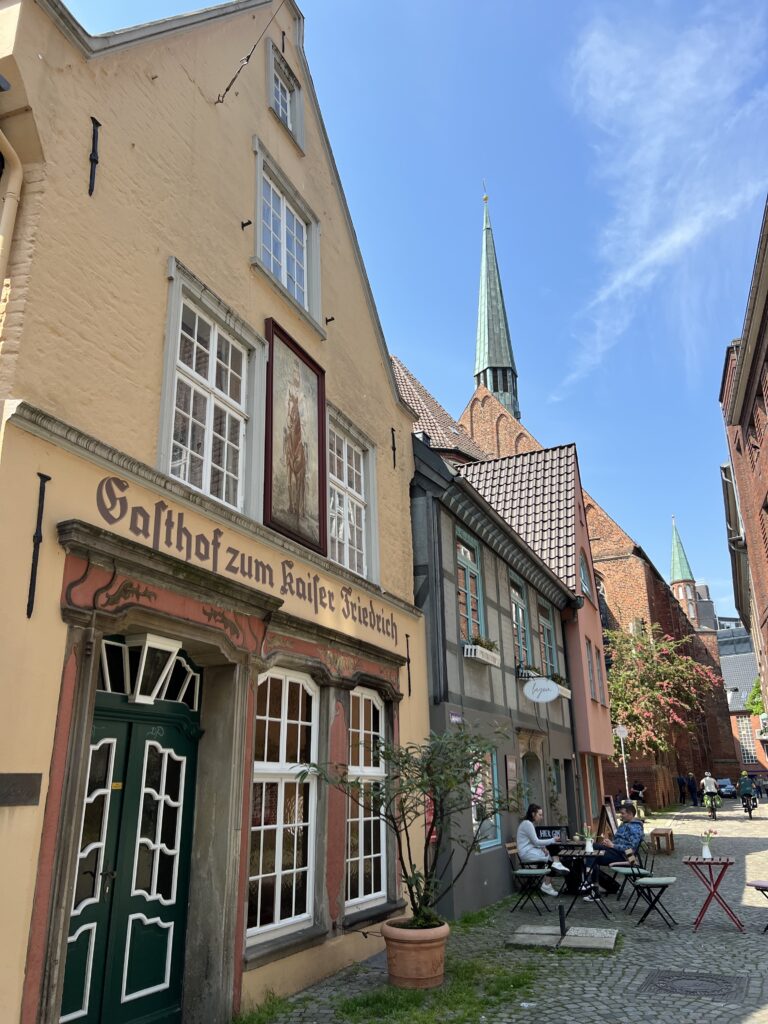
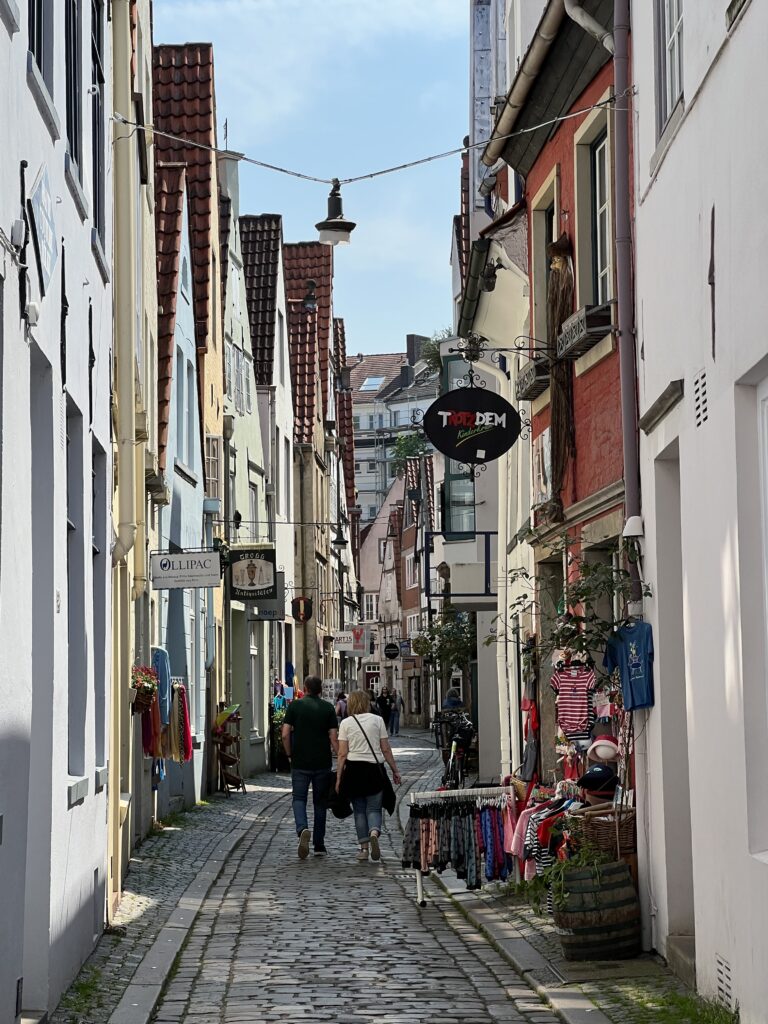
Bötcherstraße: Where Art and History Collide
Bötcherstraße, another narrow lane, another home to arts and crafts. It’s a captivating pedestrian alley in Bremen, situated between the marketplace and the Weser River. This picturesque street threads a narrative of its own, drawing visitors into a realm where architectural splendours and artistic expression converge.
The architecture of Bötcherstraße is a sight to behold. As much as the Schnoor embodied the medieval time, Bötcherstraße transports us to the 1920s era. Ornate sculptures, artisanal mosaics, and masterful woodwork drape the buildings, creating a symphony of craftsmanship that celebrates the past. It blends harmoniously Art Deco with the brickwork. Walking along this thoroughfare feels like stepping onto a canvas where history is illuminated by artistic innovation.
Bötcherstraße’s significance extends beyond its aesthetic charm. It’s a living testament to Bremen’s historical tapestry, having survived a century and played pivotal roles in the city’s evolution. It was a neglected street, restored by Ludwig Roselius, inventor of decaffeinated coffee. As a hub for artisans, traders, and craftsmen, it served as a cradle of culture and commerce.
Among its treasures, the Glockenspiel House shines as a jewel in Bötcherstraße’s crown. The melodious chimes of the Glockenspiel resonate through the air, drawing us to witness the animated figures that dance. The street is also home to the Paula Modersohn-Becker Museum, which exhibits the artist’s work bearing her name. If you have a sweet tooth, do not miss the Bremen Bonbon Manufaktur, where you can witness candies being made and obviously, shop for your favourites.
As we walked through Bötcherstraße, it was impossible not to be captivated by its appeal. The synergy between history and art conjured an atmosphere that felt alive, where every step seemed to unravel another layer of its captivating narrative.
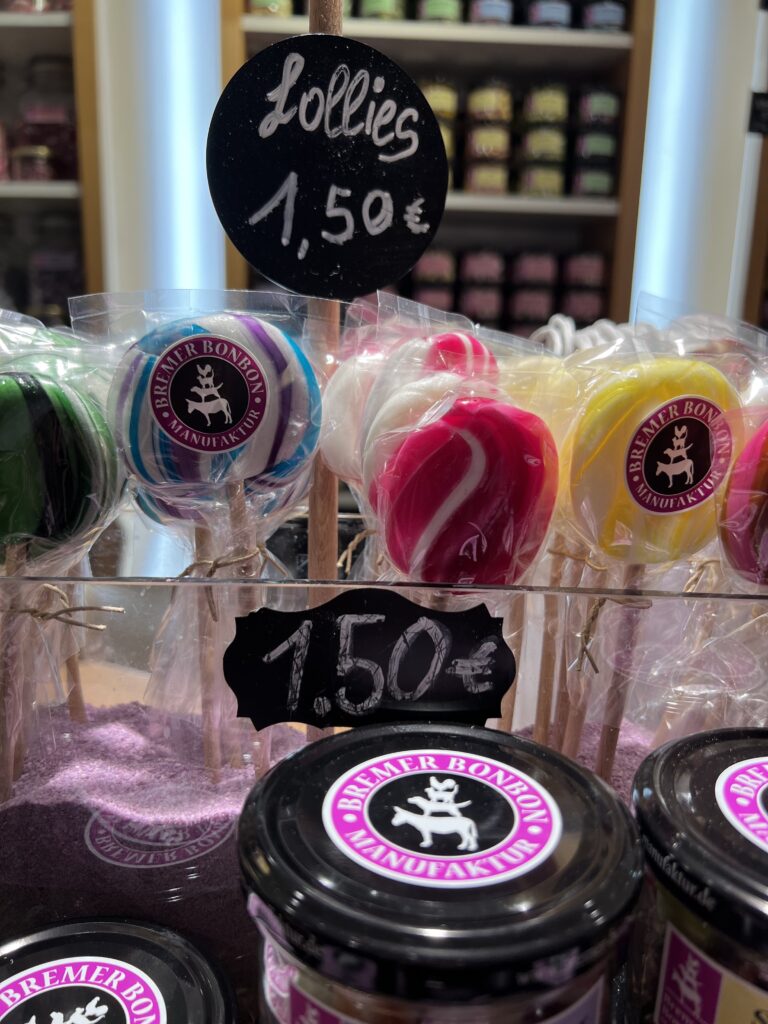
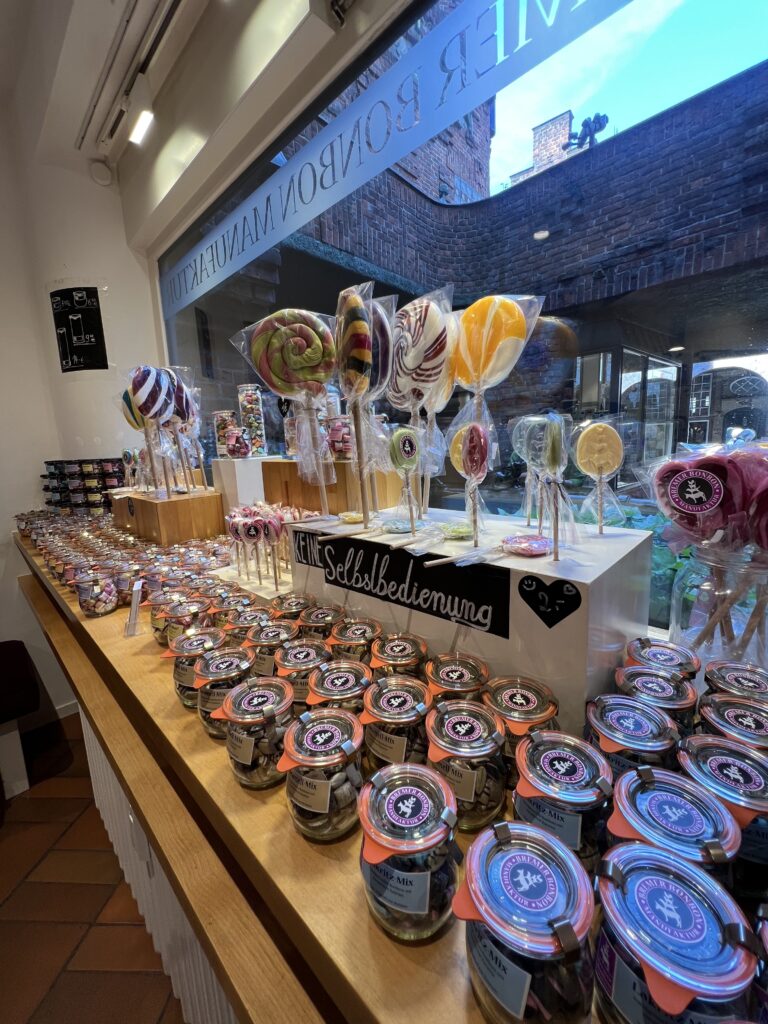
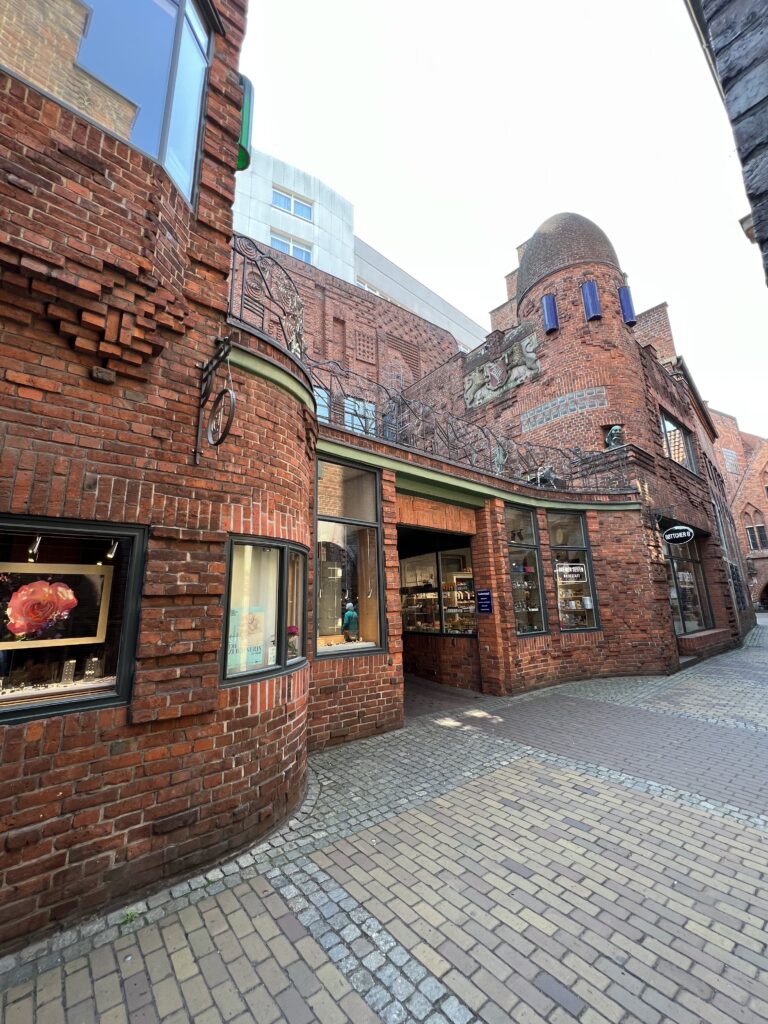
Landmarks on the Bremer Marktplatz: A Glimpse into Bremen’s Legacy
The Bremer Marktplatz stands as the beating heart of Bremen’s history, a timeless square that weaves together centuries of tradition and culture. As we stepped onto its cobblestones, we were transported into a domain where the past and present converged.
At the heart of the Marktplatz stands the grand Roland statue, an emblem of Bremen’s autonomy and freedom. This towering figure, a UNESCO World Heritage site, pays homage to the city’s medieval prowess as a self-governing entity. It’s a symbol of resilience and strength that has withstood the test of time.
Adjacent to Roland is the Bremen Town Hall, and it’s a masterpiece of Gothic and Renaissance architecture. It’s the only town hall on the UNESCO list. This structure not only houses the city’s administration but also echoes tales of historical significance. Its intricate façade and majestic halls speak volumes about Bremen’s prominence throughout history.
The Marktplatz is also adorned with the Märtyrerkirche St. Petri Dom, an imposing cathedral that dates back to the 11th century. Its twin spires pierce the sky, a reminder of Bremen’s spiritual and architectural heritage. The ornate interior is a testament to centuries of devotion and craftsmanship.
Surrounded by these landmarks, we stood in awe of the legacy that unfolded before us. The Bremer Marktplatz, a space where trade, governance, and community used to converge, continues to breathe life into the city. It’s a tapestry woven with history, tradition, and the spirit of Bremen’s people. Many of the buildings beyond the place are a marvel to the eye.
The Bremer Marktplatz is a living canvas of Bremen’s legacy and has left an indelible mark on us. It is a reminder that the echoes of the former architectural prowess continue to resonate within the vibrant present.
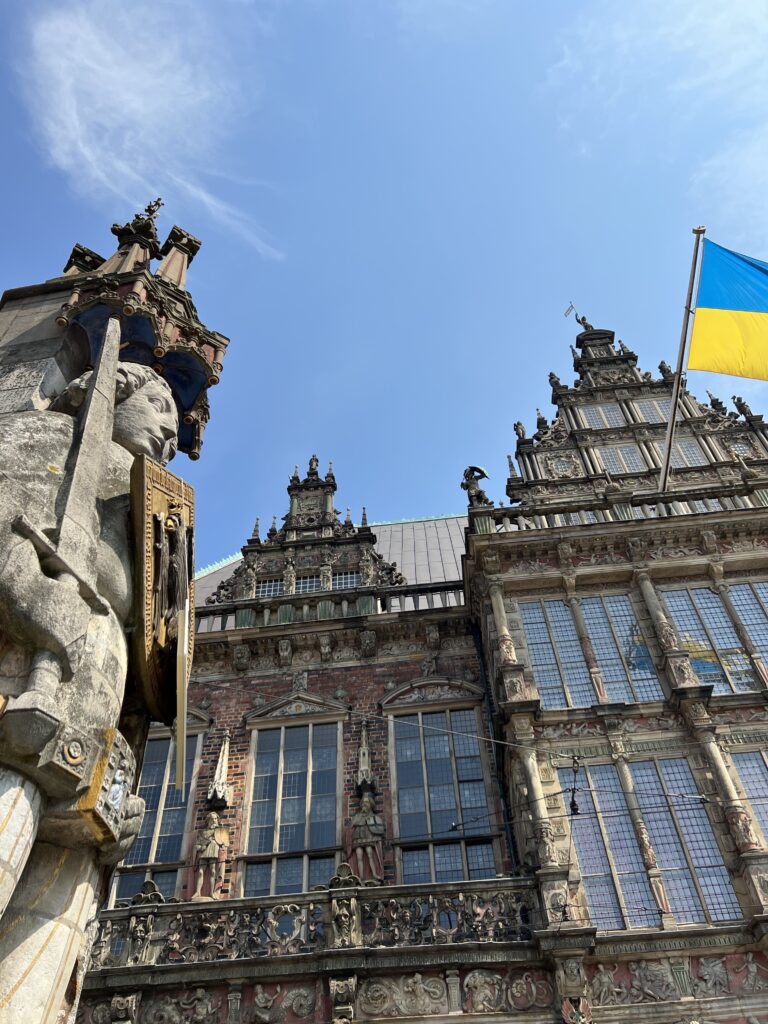

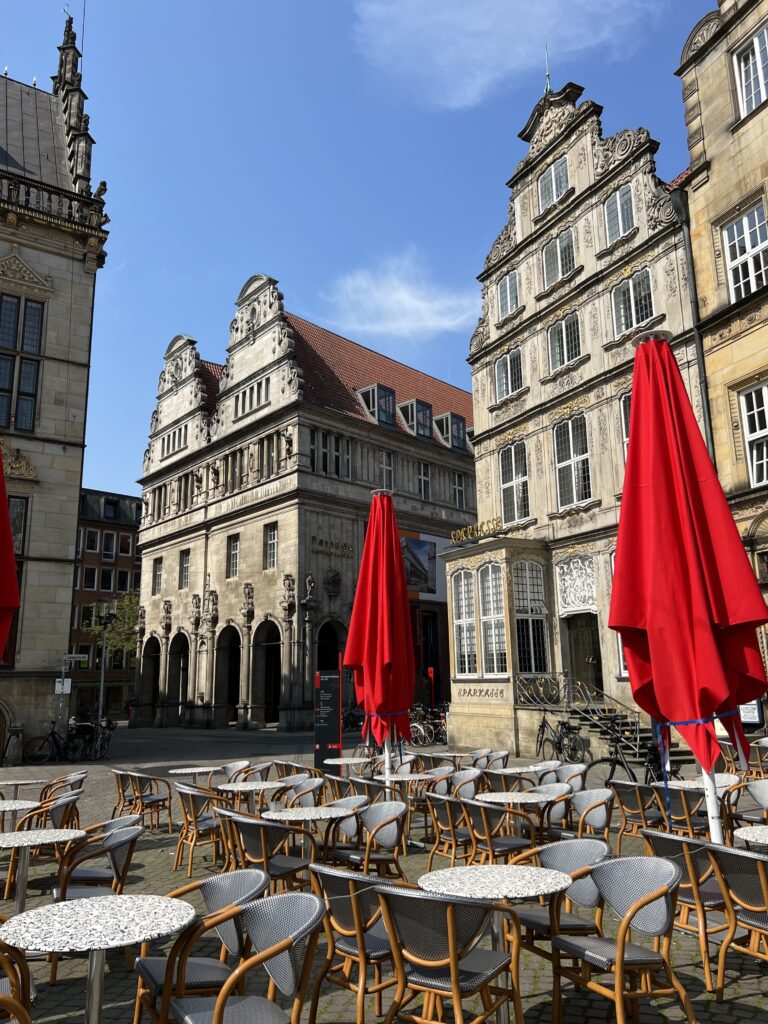
Extending the Enchantment: Unveiling More of Bremen’s Charms
In the span of a single day, our journey through Bremen was undoubtedly woven with threads of fairytales, historical districts, and unparalleled architecture. Bremen, a beautiful city in its own right, opened its arms to us, revealing layers of wonder that transcended time and culture.
The fairytales of the Brothers Grimm breathed life into the cobbled streets, infusing the air with a sense of magic that guided our steps. The Schnoor district whispered stories of centuries past through its medieval architecture and artistic facades. Bötcherstraße, a thoroughfare where art and history intertwined, showcased the city’s ability to blend tradition and innovation. And amidst the distinctive house architecture, we found a symphony of stepped roofs and vibrant murals that spoke of a city’s evolution.
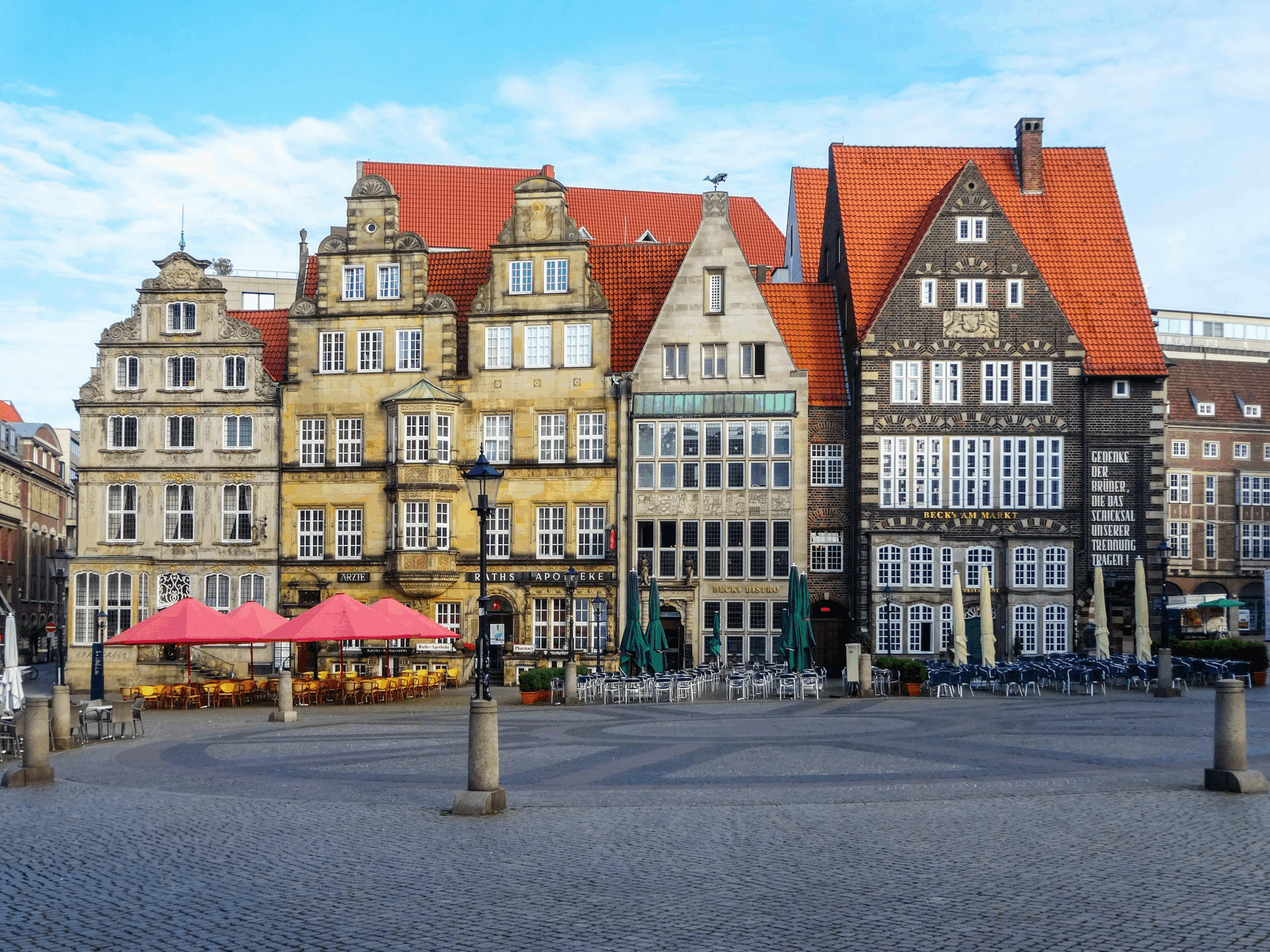
Yet, Bremen’s story is far from complete in just one day. For those who wish to delve deeper, the second beckons with unexplored treasures. A leisurely river cruise along the Weser could offer a different perspective of the city’s beauty. The Übersee-Museum, an ethnological and natural history museum, invites a deeper dive into global cultures. For those seeking tranquillity, the Stadtwald Bremen, a sprawling urban forest, offers a serene escape.
As the sun set on our day in Bremen, we realised that this city holds the power to captivate hearts in ways one could only dream of. From fairytale to reality, past to present, and a journey of a day that begs to be extended, Bremen’s appeal endures, forever inscribed in our memories as a place where history thrives in every corner.

